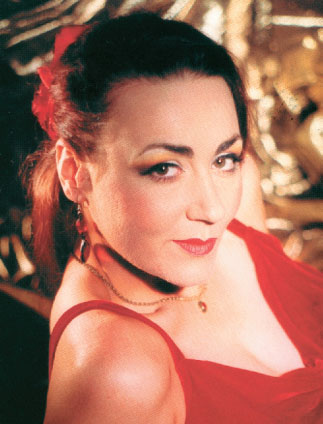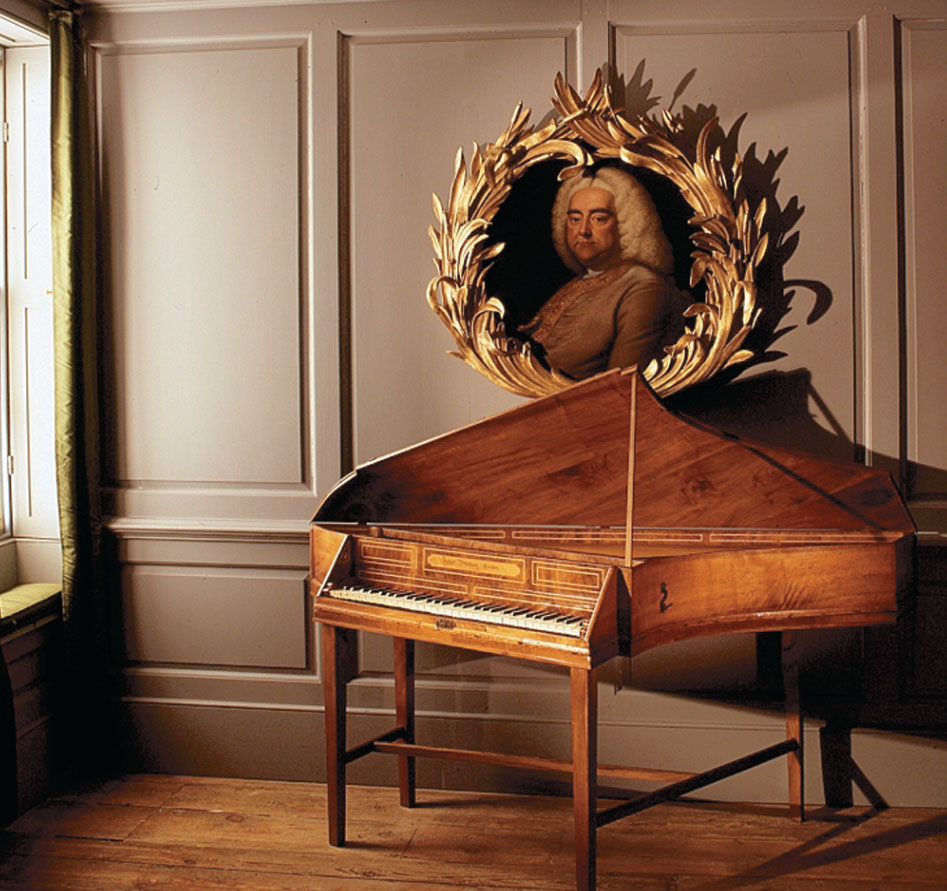
[caption id="HandelHalibutandtheFrenchConnection_img1" align="aligncenter" width="323"]

IT’S BEEN A MONTH of visitors chez Sandra, and one of them was under three. Sadly, fabulous architecture, ancient traditions and exquisite exhibitions just don’t cut it with toddlers; sometimes only strange seacreatures will do. The London Aquarium is part of the building that used to house the Greater London Council, sharing an uneasy existence with Dali Universe, the Saatchi Gallery and a film museum that seems to appeal mainly to teenagers who are into tacky horror flicks (not to be confused with the much-lamented Museum of the Moving Image, which closed some years ago). I’d been to the aquarium once before, to sing, on an ill-advised gig, when they had briefly considered opening the place as an evening entertainment venue, before remembering that fish have to sleep, too. So I’d sung for the sharks and stingrays, but never really seen them.
[caption id="HandelHalibutandtheFrenchConnection_img2" align="aligncenter" width="746"]

©PSL IMAGES/ALAMY
I’m not convinced I saw them this time either. A word to the wise: if you’re going to visit the Aquarium (and it is worth a trip), don’t go on a Saturday morning. I had never seen so many small children and pushchairs in one space, and they were queuing out of the door, too.
Once inside, it’s rather beautiful, its tanks filled with fish, both tropical and temperate and with an area dedicated to the inhabitants of the waters around Britain. Children were clearly entranced, and it kept our own small visitor happy for a good couple of hours. But with a wall of inconsiderately-parked buggies between the fish and the humans at every turn, it was a chaotic—not to mention rather expensive—morning. The only thing that saved it for me was one of my periodic spins on the London Eye, just outside, also pricey, but which gets better every time. It doesn’t matter whether I go on it in the hazy summer sunshine, the crisp, chilly, clarity of a January morning or make an effort to find out the exact time when the sun will set so that I can see the capital lighting up below me, it just stays magic. It’s sold as a tourist destination, but every Londoner I know loves it, too. It’s hard to believe it’s celebrating its 10th birthday this year.
BACK IN squarely adult territory, I took another friend for a meal in a wonderful Soho restaurant that I’ve been visiting for years, which has a history as intriguing as its clientele. During World War II, Victor Berlemont’s pub, the York Minster, became the favorite watering hole of Général Charles de Gaulle and the Free French Forces. The French House, as it became known to its select band of regulars, still has an “underground” feel to it, despite its being on the ground and first floor of the old Victorian gin palace. After the war, “the invisible pub” (“invisible,” as it was still officially the York Minster to those not in the know) was adopted by a select group of bohemian writers, artists, actors, publishers and musicians. Dylan Thomas was a regular (he once left his only copy of Under Milk Wood there after a particularly heavy night’s entertainment…) as were Jeffrey Bernard, Oliver Reed, Francis Bacon and John Hurt. Although regulars were outraged when it was officially renamed The French House in the 80s, the place has somehow managed to maintain its quirky feel, and it still boasts an eclectic guest list—from members of Led Zeppelin to Prince Edward, Timothy Dalton to Guns & Roses. No nasty canned muzak, no fruit machines and no TV, a ban on mobile phones plus a staggering 25 wines and champagnes by-the-glass make this one classy establishment. Upstairs, the restaurant is simple and unfussy—plain white tablecloths, parquet flooring, bentwood chairs and a giant mirrored wall. The menu, understandably, is classic French cuisine. My friend, who eats no carbs, was delighted with her Fillet Steak with Roquefort Butter; I was equally happy with some Loch Duart Salmon, though being a carboholic I couldn’t resist the Crème Brulee afterwards.
[caption id="HandelHalibutandtheFrenchConnection_img3" align="aligncenter" width="891"]

© MALCOLM CROWTHERS
I’VE WANTED TO see Handel House at Number 23 Brook Street since it opened in 2001, but was keen to marry the trip with one of the popular Thursday Live recitals rather than just visit. The teeny-tiny museum was home to the composer for 36 years and it’s where he created such masterpieces as Messiah, Music for the Royal Fireworks and Zadok the Priest. But what’s so great about combining a visit with a concert is that as well as looking round the place, you get to sit and listen to chamber music in the very room where Handel himself held musical receptions for his friends. We attended an evening of Georgian carols, but there’s something on every Thursday, often using the reproduction Ruckers double-manual harpsichord. It’s important to book in advance, as the room only holds 28 people, but well worth the effort. Just to add a note of surrealism, the museum also spreads into a room next door at Number 25, which lays claim to an almost equally famous tenant—Jimi Hendrix.
WHILE WALKING part of the southern Thames Path, near where the new US Embassy will be moving, Tony and I came across the very curious Brunswick House, tucked in between a big road, an industrial estate and Vauxhall Bridge. The once-splendid 1758 mansion may have fallen on hard times, but it’s not without a certain rough charm these days, and seeing that it was open, we went for a poke around. The London architectural salvage company Lassco is well-known for occupying intriguing buildings and must have thanked its lucky stars at being able to move into this elegant reminder of a glorious past, still more or less complete, with Coade stone porch, original staircase and rams’ skull frieze. Inside, the company has lent its own quirky reinterpretation to this rather beautiful building, with all manner of strange salvage—from Victorian claw-footed iron bathtubs and Edwardian chemists’ display cases, stuffed animals and crystal chandeliers to 1940s cabinets, a selection of church doors and several marble fireplaces, all displayed with an almost museum-like attention to detail. I’m still kicking myself for not getting one of the magnificent champagne coolers that formed part of the silverware from a defunct turn-of-the-last-century hotel.
BACK ON THE NORTH BANK of the Thames, I set myself the task of finding what was left of the 17th-century mansion York House, which stood just to the east of where Charing Cross station stands now. One could be forgiven for assuming that its Water Gate might be found, well, somewhere near the water. In fact, I discovered it in the middle of a park, a good 150 yards from the Thames. It’s not been moved—merely stranded—thanks to that great work of Victorian engineering, the Embankment, which, while offering more building space and creating somewhere for the new sewerage system to work, also narrowed the river itself. But when York House was built in 1626, the Strand really was that, a beach—so whenever Charles I visited his favorite, the Duke of Buckingham, he and the other guests usually approached by boat. Much like Venice, the best-looking part of the house was therefore river-side, and York House’s Water Gate was designed to impress. Created by Inigo Jones, the baroque triple-archway has a rusticated front, shell decorations, splendid columns and the Duke of Buckingham’s coat of arms (despite the fact that his son didn’t like the place and sold it off in 1672). They demolished the house, but left the Water Gate—and one other strange thing. The conditions of sale included a requirement that the new streets spell out his name. So you’ll find George Street, Villiers Street, Duke Street and Buckingham Street and “Of Alley” (unsportingly renamed York Place by a grim-faced Westminster Council; they were later forced to acknowledge the change with a plaque.) The whole thing spells out “George Villiers, Duke Of Buckingham.” The second duke may not have had taste, but he certainly had style.
[caption id="HandelHalibutandtheFrenchConnection_img4" align="aligncenter" width="542"]

COURTESY OF BRUNSWICK HOUSE
BRUNSWI CK HOUSE[/caption]
Next time, I’ll be poking around Alexander Pope’s grotto, visiting a tiny museum dedicated to the work of Isambard Kingdom Brunel and hoping it will be third time lucky for a Chelsea restaurant I’ve failed to visit twice now—flu and snowy conditions have scuppered me so far. Wish me luck.
THIS MONTH’S CONTACTS
The London Aquarium—
www.sealife.co.uk/london
The French House—
www.frenchhousesoho.com
Handel House— www.handelhouse.org
Lassco Architectural Salvage at
Brunswick House— www.lassco.co.uk
York House Water Gate— Embankment Gardens, very close to Embankment tube





Comments